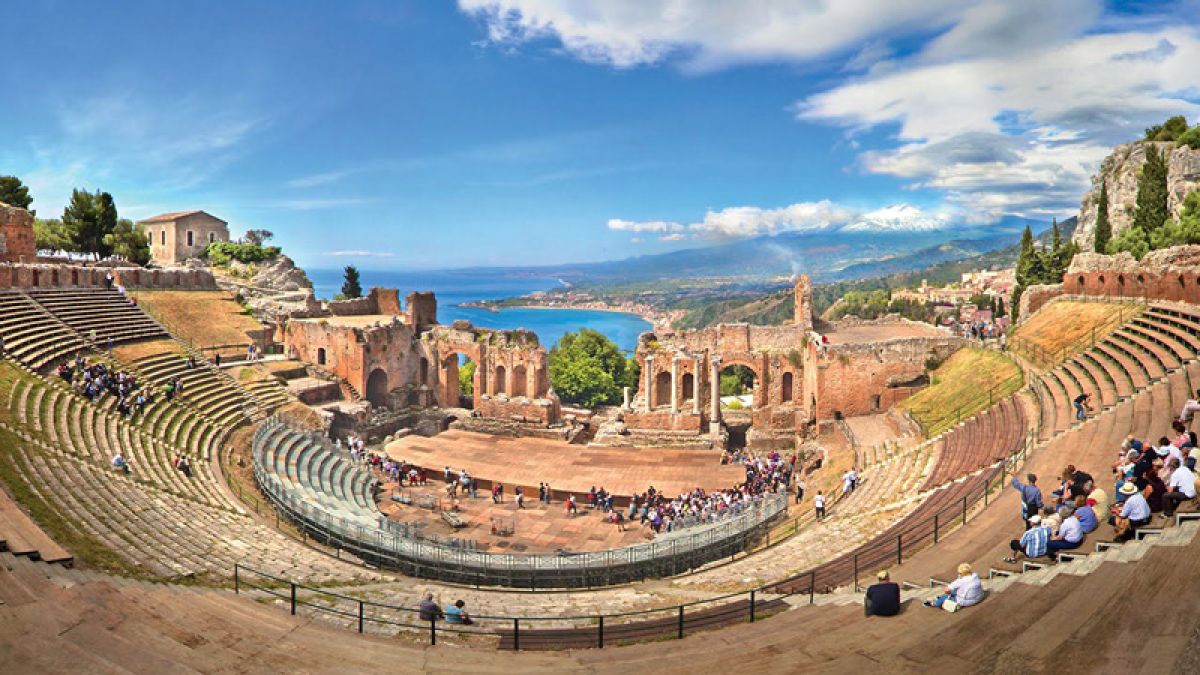7-DAY ARCHIMEDE PRIVATE TOUR
Palermo, Agrigento, Noto, Siracusa and Taormina
Around Sicily, the cradle of Italian civilization, discovering the culture and spirit of this wonderful island.
HIGHLIGHTS
- Palermo, Greeks, Arabs and Normans mix in a unique style
- Agrigento, walking in the footsteps of ancient Greeks
- Siracusa, encapsulating Sicily’s timeless beauty
- Val di Noto, the triumph of the Baroque
- Taormina, a patch of paradise
WHAT’S INCLUDED
Overnights at 3* to 5* Hotels, Country Houses and Historical Palaces (when available), City Apartments along the itinerary
Transfers by private car / minivan / minibus
Activities:
- Day 1: Full-day private walking tour of Palermo city centre with an Authorised Tourist Guide – Admission to the Cathedral of Monreale and Cappella Palatina
- Day 2: Full-day excursion with an Authorised Tourist Guide of Western Sicily: Erice, Trapani and the Salt Mines
- Day 3: Visit of a wine cellar in Menfi area with tasting
- Day 4: 2-hour private walking tour of the Valley of the Temples Archeological Park with an Authorised Tourist Guide – Admission to the Valley of Temples Archeological Park
- Day 5: Full-day excursion of Val di Noto area with an Authorised Tourist Guide: Noto and Modica
- Day 6: 3-hour private walking tour of Siracusa city centre with an Authorised Tourist Guide
- Day 7: Admission to the Greek Theatre in Taormina
Customizations and Options:
- Pick up at Palermo Airport at the start of the tour
- Accommodation in Palermo the night before the start of the tour
- Chocolate Class in Modica
- 2-hour Sicilian cooking class in Taormina area
- Drop off at Catania Airport at the end of the tour
- Other options upon request
Benvenuti in Sicilia, welcome to Sicily.
First a Greek and Roman city, then a capital of the Arab world, and later conquered by both the Normans and the Swabians – this is Palermo. In this place, preciosities left by the Arab and Norman rules coexist along with the Baroque and Art Nouveau styles of the buildings and monuments, the city streets and markets, gardens and theatres. The influence of Palermo’s enormously multi-ethnic past is visible in its Cathedral, a majestic work begun in the 12th Century and rehashed several times.
Founded on top of a preexisting basilica, the Cathedral was transformed into a mosque by the Moors and subsequently returned to its Christian designation by the Normans. Now supporting the 17th-century dome and featuring a Medieval bell tower, it is adorned with Gothic decorations and holds the relics of Santa Rosalia, the city’s Patron Saint. The tombs of Emperors Roger II and Frederick II are also located here.
Nearby, the Norman Palace stands: originally an Arab structure, it has always been the seat of power. It contains the Palatine Chapel, rich in Byzantine-inspired mosaics, and the Martorana – the Church of Santa Maria dell’Ammiraglio – is a true and proper masterpiece. With its high, arcaded bell tower, the elegant Martorana dates back to the Norman epoch; meanwhile, the monumental Pretoria fountain that inhabits the neighbouring homonymous piazza is Baroque. The road to the Martorana Cathedral crosses Piazza Vigliena, also called the Quattro Canti or “Four Songs,” an intersection embellished by statues and fountains from the 17th Century. On Piazza della Pretoria lies the 17th-Century Palace of the Municipio, with its splendid fountain from the 1500s, composed of 644 marble groups. This district’s streets carry Italian, Arabic, and Hebrew names. Moreover, one can move toward the sea, passing by the Vuccirìa, the oldest and most-animated market in the entire city; it is located in Piazza San Domenico, home to the same-named Church, among the most attractive Baroque structures in Palermo. Another building that dates back to the Norman era is the deconsecrated Church of San Giovanni degli Eremiti, built on the foundations of an old Mosque and boasting red domes in oriental style.
In the city’s ancient centre stands an imposing 14th-century construction called the Steri (from the Latin “hosterium”, meaning fortified palace); once a prison and tribunal, today it is the seat of the university rectorate. Nearby are the Church of Santa Maria degli Angeli and Palazzo Abatellis, which houses the Regional Gallery, with paintings and artworks from the Middle Ages to the 1700s.
The more modern section of the city lies closer to the sea. From the neoclassical Teatro Massimo – a temple for opera-goers – visitors will glimpse the city’s other important theatre, the Politeama Garibaldi. Erected in the mid-1800s, this Theatre is in the Pompeiian style. Not to be left out, the Teatro dei Pupi (a marionette theatre) is just as characteristic and puts on performances featuring Charles the Great and his paladins or courtiers. The street, Via Libertà, covered by shady trees, carries into a district where 19th-Century and Art Nouveau architecture reign, with the symbolic and splendid square-grid streets, that bustle with activity. The Botanical Garden, founded in 1789, is famous for its exemplary species from all over the world. Further away from the centre is the “Zisa” (in, where else, Piazza Zisa) and the “Cuba” (Corso Calatafimi), both constructions in the oriental style, built during the reign of William II.
Palermo’s surroundings are just as enchanting as the city itself. In particular, Mondello Beach is beloved for its crystal-clear sea, but not only; it also features a particular type of food vendor not found everywhere: octopus vendors or “polipar”, who sell this delicious seafood to the delight of beach-goers.
Food in Sicily is important, and Palermo is no exception; one instance is the markets at Vuccirìa and Ballarò, with panoplies of street food to satisfy all palates and preferences. Those less interested in gastronomy and more interested in antiques, for example, should check out Palermo’s Papireto Quarter.
Just a few miles from Palermo, you should not miss Monreale, located in a panoramic position on the Conca D’Oro. Monreale is one of Sicily’s and Italy’s most renowned touristic spots for its artistic legacy, represented by the Cathedral of Santa Maria la Nuova. The undisputed highlight of Monreale Cathedral is its richly mosaiced interior. From the 12th and 13th centuries, the golden mosaics completely cover the walls of the nave, aisles, transept and apse – amounting to 68,220 square feet in total. The mosaic cycle is second only to the Hagia Sofia in size and much better preserved. Some of the mosaics were created by artisans brought from Venice.
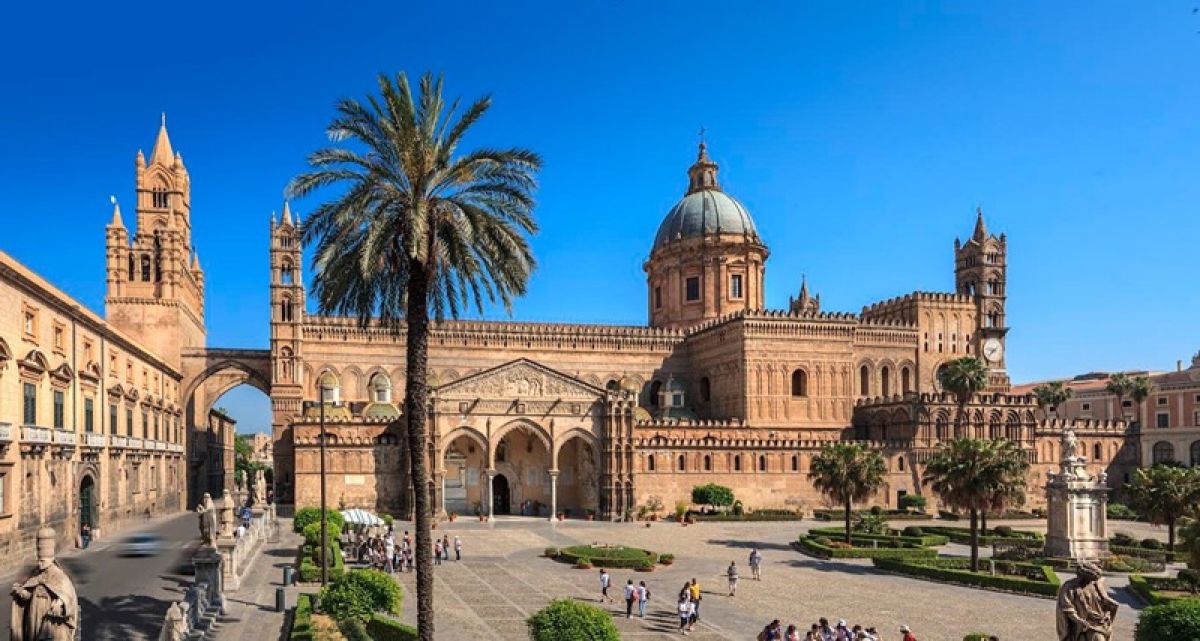
The road running along the west coast of Sicily, with its many salt marshes, which have given rise to one of the oldest salt-extracting industries in the world, is famous as “The Salt Road”. Between Trapani and Marsala, the marshes are now protected, in part because of the interesting birdlife, and also as important sites of industrial archaeology.
A natural and cultural landscape where the salt draws a fine line joining the land to the sea. A calm sea, closed by islands in a kind of lagoon inhabited by the Phoenicians and the Greeks. The first striking thing is the colours: the yellow of the stones, the blue of the sea, the green of the Mediterranean bush and the white of salt.
Along the way, you may stop at “Stagnone di Marsala”, Marsala’s Pond, which includes several salt mines, Isola Lunga and an archipelago of small islets including the nice Mozia. Many salt mines are decommissioned, while in others they still work. The whole salt mines complex, a natural reserve, is a magical place to take photographs. The best time is just before sunset when the flats take on amazing colours.
At 750 meters on sea level, with a historic centre of just 512 inhabitants, Erice is one of the most beautiful villages in Sicily. Known in antiquity as a city of one hundred churches and a hundred convents, it is dominated by the Norman castle, the Castle of Venus, which looks towards Mount Cofano.
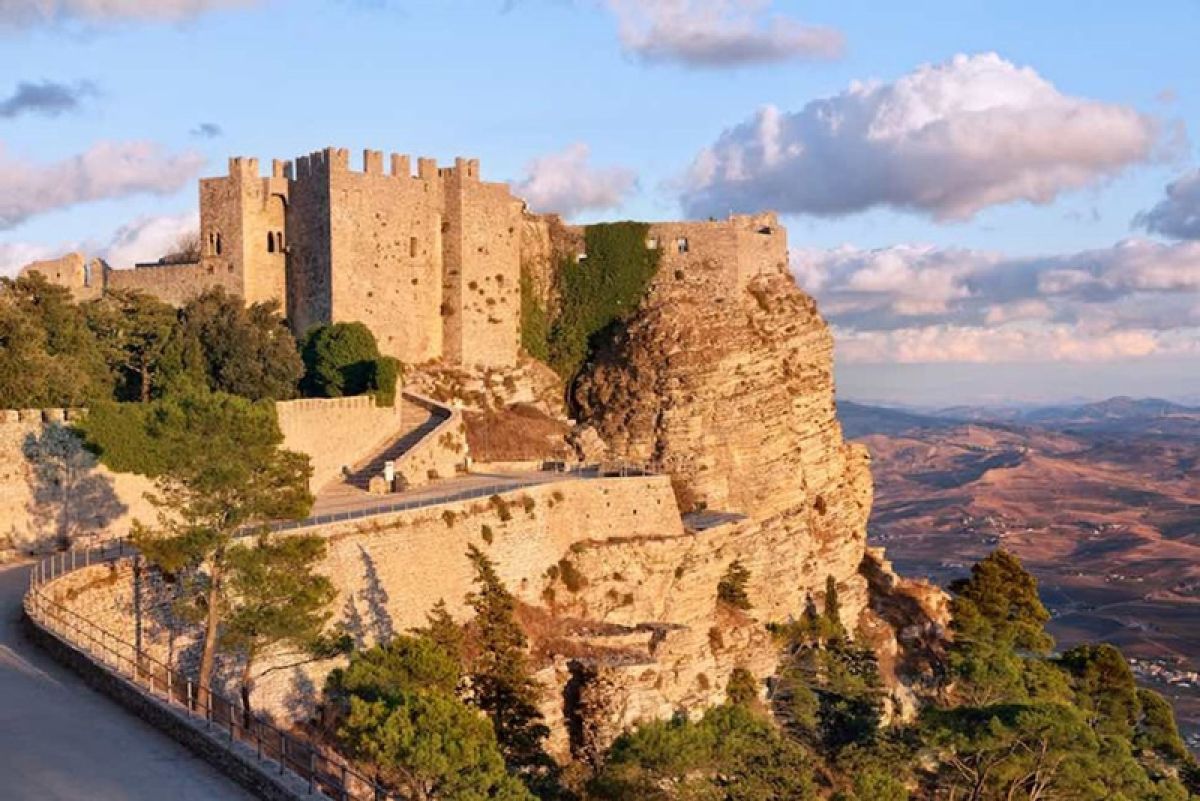
In the Valley of the Temples (a UNESCO World Heritage Site), the fascination of ancient history blends with the beauty of nature. The sea on one side, the old city hill on the other, the majestic Doric-style temples rising in the centre of it all, and the tones of the tufo with which they are constructed create a picture-perfect setting.
The Temple of Concordia is the most well-preserved of the temples, having been transformed into a church. The Temple of Juno still boasts 25 of its original 34 columns to support its structure. Then, the Temple of the Dioscuri is considered the most symbolic, while the Temple of Hercules is the oldest. Together with the Temple of Zeus, these five giants dominate the Valley.
Leaving the Valley and heading towards the city, you will come across the remains of the Hellenistic-Roman Quarter, with its houses decorated in beautiful mosaics. The ancient shops, wells, cisterns and sewer system lend a relatively clear idea of how the old city looked. Evidence abounds from the Greek era: be sure to see the fascinating objects at the Regional Archaeological Museum; they originate from the ancient area of Akragas.
Through the Porta di Ponte, you will enter the ancient quarter of Agrigento, still conveying the image of a Medieval village, with its narrow roads and steep, winding alleys all converging towards the main road. Stroll through the ancient city and wander to the Cathedral, where a grand stairway leads to the churchyard and bell tower, the construction of which has never been completed.
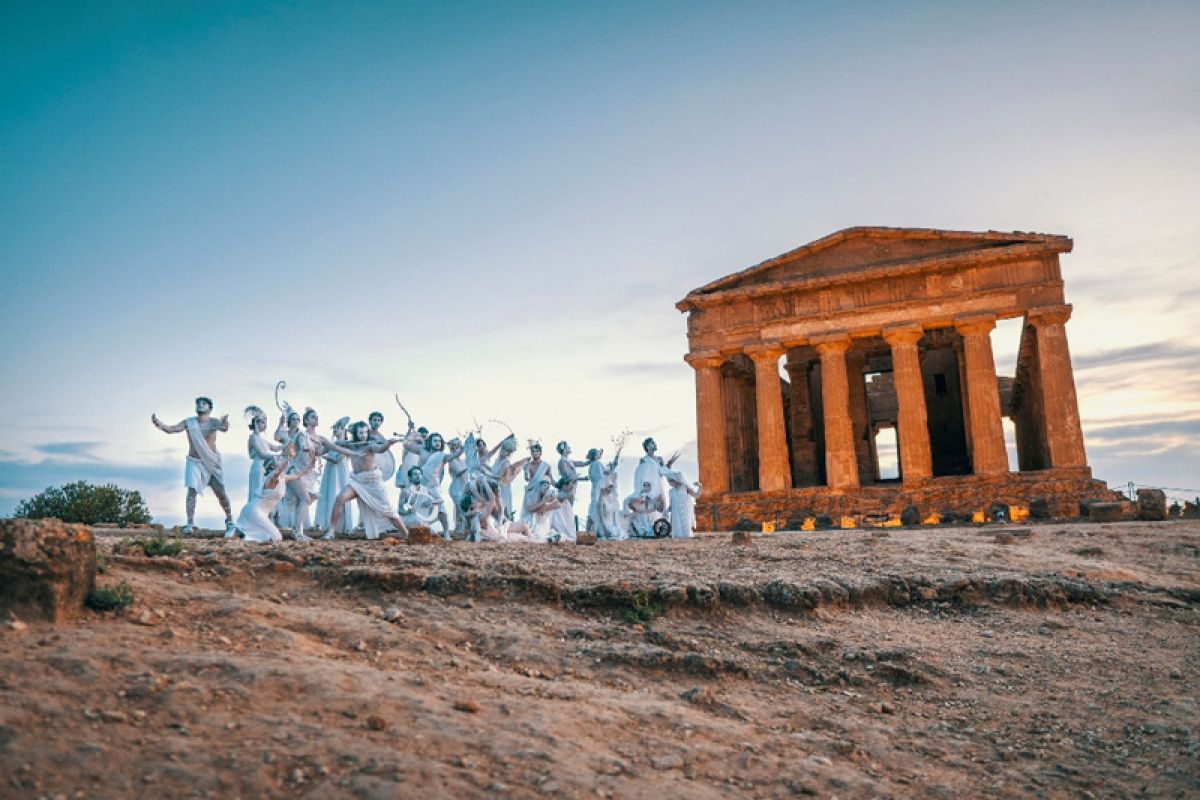
In southeastern Sicily, Val di Noto (the Noto Valley) – with its eight gorgeous late-Baroque cities – became one of the Italian UNESCO World Heritage Sites in 2002. The eight, Caltagirone, Militello Val di Catania, Catania, Modica, Noto, Palazzolo, Ragusa and Scicli, already existed during the Medieval Age. Still, they were rebuilt (in part or entirely) after the catastrophic earthquake of 1693. Following the stylistic model predominant during the era, the cities’ architecture, urban plan and decorations constitute the culmination of one of the last periods of Baroque’s flourishing in Europe.
Known in antiquity as Ibla, Ragusa features two somewhat different city centres, one reconstructed from the ground up, in the new style, after the events of 1693 and the other according to its original Medieval look. An itinerary through the Baroque in Ragusa winds among nine principal churches (e.g. San Giovanni Battista, San Giorgio, Santa Maria dei Miracoli) and seven palazzi (including the Cancelleria, Bertini, and Cosentini).
Palazzolo and Modica also have two urban centres. The first one in Palazzolo is a Medieval centre around which the old city was rebuilt after the earthquake. The new town subsequently developed around another town centre. The Churches of San Sebastiano, and Saints Peter and Paul are of particular importance. Of rare beauty, Modica and its old Castle centre are high on one of the hills in the Iblei Mountains, while the other, newly-constructed one lies down in the valley. Among the spectacular urban monuments, the Cathedral of San Giorgio and the Church of St. Peter (the “Duomo” of the lower city) certainly merit a visit.
The city of Noto is rehashed in an entirely new area, also divided into two levels. The more recent section, on an incline, provides a spectacular composition of streets and buildings in the Baroque, from noble palaces such as Palazzo Ducezio to religious complexes – the Cathedral of San Nicolò, for example.
Finally, the last pearl on the string of the Noto Valley’s cities is represented by magnificent Scicli, where churches and patrician villas make for a visibly striking urban panorama. Specifically, Palazzo Beneventano (especially its glorious facade) is an architectonic and artistic masterpiece.
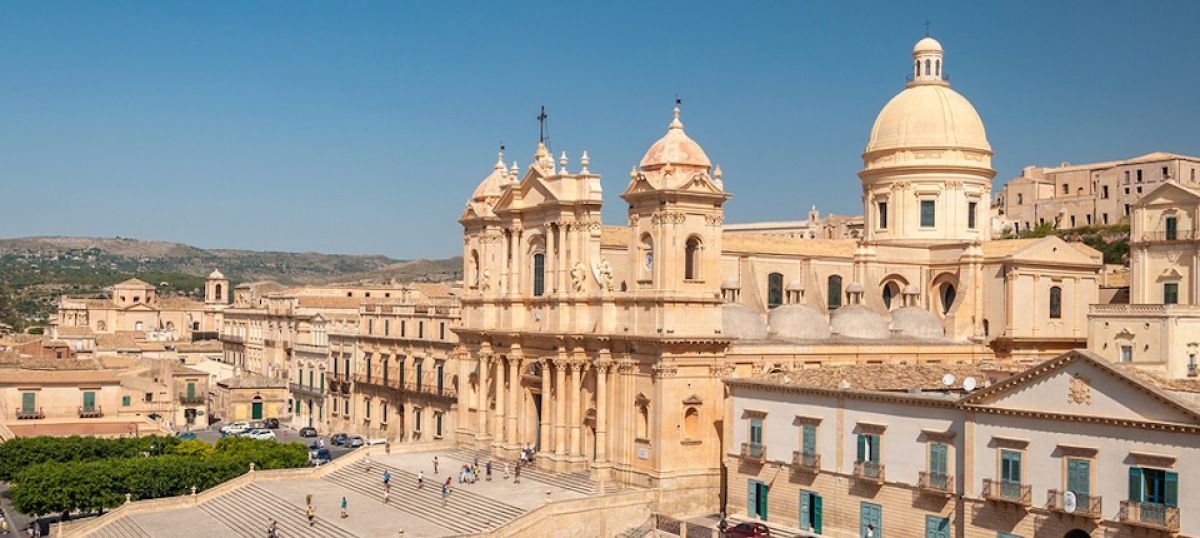
Cicero defined Syracuse as “the most beautiful city in Magna Graecia.” He was right, of course. Still today, the echoes of its ancient grandeur reverberate from the streets, churches and monuments, corroborating its religious and cultural importance: Syracuse is a destination no traveller should pass up and, with Sicily’s Mediterranean climate, can be visited in any season of the year.
Made a UNESCO World Heritage Site in 2005, the city conserves ancient vestiges in every niche and corner, from Classical testimonies to Baroque splendours, all within a landscape of enchanting beauty. The UNESCO Site actually includes two different places: the cave necropolis of Pantalica and the historical centre of Syracuse. Both evidence the development and progression of ancient civilizations.
Thanks to its enviable geographic position, Syracuse was a crucial crossroads of commercial exchange since the Greeks settled it. Today it is a living artefact, connoting the customs and traditions of the many Mediterranean populations that passed through and dominated it, from the Byzantines, Bourbons, and Arabs to the Normans and Aragonese. Sùraka, as Syracuse is known in Sicilian dialect (meaning an abundance of water), was one of the principal settlements in Magna Grecia, a place of artistic brilliance and commercial power. It was also one of the most important centres of Christianity during the Middle Ages, and it later saw its Baroque golden age after the earthquake of 1693. However, the oldest urban nucleus resides on the little island of Ortygia, where we find the Temple of Apollo, the most ancient in Sicily. The remains from the Temple of Athena (5th Century B.C.) were later converted into the Cathedral, while the Temple of Zeus “rui culonne” (two columns) because what is left of the entire structure consists of just two columns.
In the 4th Century B.C., Syracuse expanded via the residential quarters of Tyche and (the monumental) Neapolis ( Ortygia, Acradina and Epipoli already existed). Traces left by the Roman conquest include the beloved Amphitheatre, while just as magnificent is the Castello di Maniace, a Byzantine citadel commissioned by Frederick II of Swabia.
The Cave Necropolis of Pantalica is not far from Syracuse, close to open quarries. Pantalica became a refuge on the plateau of the Iblei Mountains for the coastal inhabitants fleeing the Sicels and other Italic populations that landed here in the first half of the 8th Century B.C. (the period to which these scenographic necropolises date). The complex consists of approximately 5,000 tombs dug into the rock, and the Anaktoron (Prince’s Palace) positioned at the top of a hill, a reminder of the majestic Mycenaean palaces.
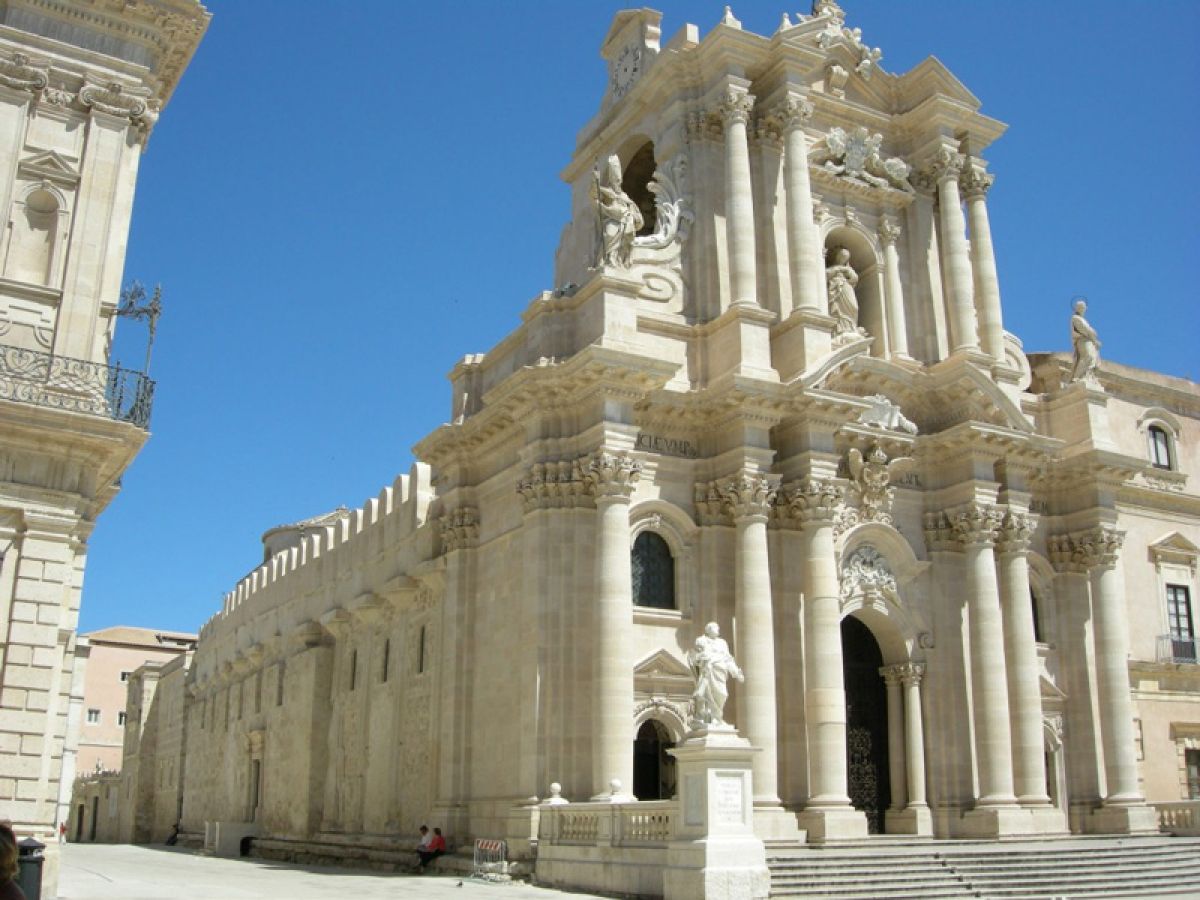
Taormina, the “Pearl of the Mediterranean”, sits on a natural terrace above the sea. The Greek Theatre is one of the most suggestive spots, sited in a fantastic position and dipped into the blooming nature of this land. The view goes across the sea and reaches the Calabria coasts, the town of Siracusa and Etna’s peak. Undoubtedly, today and at that time, the audience is fascinated by this beautiful view.
A walk in the Villa Comunale, offering typical Mediterranean maquis vegetation with a nice view sheer above the sea, is not to be missed.
The coast offers charming sandy beaches lapped by crystal-clear water: the ones of Giardini Naxos and Mazzarò are the most frequented. In front of Capo Sant’ Andrea, the coast of Isola Bella is today a protected natural oasis. After spending the day at the beach, you can shop in the workshops on the main street, where you can find everything – from pottery to jewels, from clothes to souvenirs. Or you can rest, drinking a lemon slush served with a hot brioche or a typical cassata siciliana.
The main food is, of course, fish: sardines, swordfish according to the best Sicilian tradition, but also eggplants, ricotta, olives and any good product that grows under the sun of this land.
The tour is over, but the memories of a fantastic journey will accompany you for a lifetime!
See more about your destinations on our YouTube channel.
Arrivederci for another tour with VITOR, Visit Italy on the Road.
